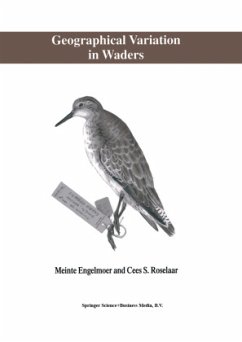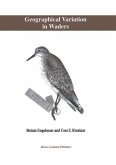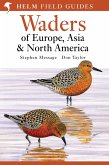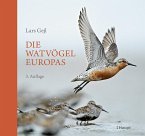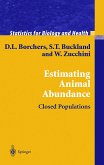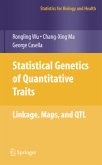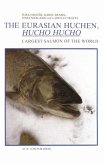Morphometrical differentiation 63 Prediction of breeding origin . . . . . . . . . . . . . . . . . . . . . . . . . . . . . . . . . . . . . . . . . . . . . . . . . 68 Body mass 69 Primary moult 69 Discussion . . . . . . . . . . . . . . . . . . . . . . . . . . . . . . . . . . . . . . . . . . . . . . . . . . . . . . . . . . . . . . . 69 The taxonomy of the Eurasian Golden Plover 69 The existence of a partial breast-feather moult during breeding 69 Morphometrical differentiation between both sexes . . . . . . . . . . . . . . . . . . . . . . . . 70 The occurrence of primary moult on the breeding grounds 70 Summary 70 6 Grey Plover - Pluvialis squatarola 71 Introduction . . . . . . . . . . . . . . . . . . . . . . . . . . . . . . . . . . . . . . . . . . . . . . . . . . . . . . . . . . . . . . 73 Morphometrical differentiation 77 Prediction of breeding origin . . . . . . . . . . . . . . . . . . . . . . . . . . . . . . . . . . . . . . . . . . . . . . . . . 80 Accuracy 81 Exclusivity 81 Contact zones . . . . . . . . . . . . . . . . . . . . . . . . . . . . . . . . . . . . . . . . . . . . . . . . . . . . . . . . . . . . 82 Body mass 85 Primary moult 85 Discussion . . . . . . . . . . . . . . . . . . . . . . . . . . . . . . . . . . . . . . . . . . . . . . . . . . . . . . . . . . . . . . . 86 The taxonomy of the Grey Plover . . . . . . . . . . . . . . . . . . . . . . . . . . . . . . . . . . . . . . 86 Small size at northern latitudes . . . . . . . . . . . . . . . . . . . . . . . . . . . . . . . . . . . . . . . . 87 Morphometrical variation in the Palearctic 87 Summary 87 7 Red Knot - Calidris canutus . . . . . . . . . . . . . . . . . . . . . . . . . . . . . . . . . . . . . . . . . . . . . 89 Introduction . . . . . . . . . . . . . . . . . . . . . . . . . . . . . . . . . . . . . . . . .. . . . . . . . . . . . . . . . . . . . . 91 Morphometrical differentiation 93 Prediction of breeding origin . . . . . . . . . . . . . . . . . . . . . . . . . . . . . . . . . . . . . . . . .. . . . . . . . 99 Accuracy 99 Exclusivity 101 Contact zones . . . . . . . . . . . . . . . . . . . . . . . . . . . . . . . . . . . . . . . . . . . . . . . . . . . . . . . . . . . 102 Body mass 102 Primary moult 103 Discussion . . . . . . . . . . . . . . . . . . . . . . . . . . . . . . . . . . . . . . . . . . . . . . . . . . . . . . . . . . . . . . 103 of the Knot . . . . . . . . . . . . . . . . . . . . . . . . . . . . . . . . . . . . . . . . . . . 103 The taxonomy Is the knot breeding in Yakutia? 106 Different degrees of geographical variation in the d'd' and !f!f 106 Summary . . . . . . . . . . . . . . . . . . . . . . . . . . . . . . . . . . . . . . . . . . . . . . . . . . . . . . . . . . . . . . . 107 8 Sanderling - Calidris alba 109 Introduction . . . . . . . . . . . . . . . . . . . . . . . . . . . . . . . . . . . . . . . . . . . . . . . . . . . . . . . . . . . . . 111 Morphometrical differentiation 111 Prediction of breeding origin . . . . . . . . . . . . . . . . . . . . . . . . . . . . . . . . . . . . . . . . . . . . . . . . 116 Accuracy 116 Exclusivity 118 Contact zones . . . . . . . . . . . . . . . . . . . . . . . . . . . . . . . . . . . . . . . . . . . . . . . . . . . . . . . . . . . 118 Body mass 118 Primary moult 118 Discussion . . . . . . . . . . . . . . . . . . . . . . . . . . . . . . . . . . . . . . . . . . . . . . . . . . . . . . . . . . . . . . 118 The taxonomy of the Sanderling . . . . . . . . . . . . . . . . . . . . . . . . . . . . . . . . 118 Sexing Sanderlings 119 Summary . . . . . . . . . . . . . . . . . . . . . . . . . . . . . . . . . . . . . . . . . . . . . . .. . . . . . . . . . . . . . . . 119 VI 9 Curlew Sandpiper - Calidris ferruginea 121 Introduction . . . . . . . . . . . . . . . . . . . . . . . . . . . . . . . . . . . . . . . . . . . . . . . . . . . . . . . . . . . . . 123 Morphometrical differentiation 123 Prediction of a bird's sex . . . . . . . . . . . . . . . . . . . . . . . . . . . . . . . . . . . . . . . . 127 Accuracy 127 Exclusivity 127 Bod
`...This is an important modern study of the geographical variation in birds in general and waders in particular. It is therefore of great interest to systematic ornithologists and to all those field ornithologists involved in the ringing and measuring of waders during migration or on the wintering grounds., especially to those workers analysisng the large data sets gathered every year. Hopefully, this book will encourage eco-ethologists to undertake comparative studies of those conspesific wader populations which the authors have distinguished taxonomically.'
Ethology, 106(1):1-104 (2000)
`This is an impressive book in more ways than one. ... Should you buy this book? If you have any interest in waders then my answer would be an emphatic yes. ... It is an excellent book.'
Ibis, 142 (2000)
Ethology, 106(1):1-104 (2000)
`This is an impressive book in more ways than one. ... Should you buy this book? If you have any interest in waders then my answer would be an emphatic yes. ... It is an excellent book.'
Ibis, 142 (2000)
'...This is an important modern study of the geographical variation in birds in general and waders in particular. It is therefore of great interest to systematic ornithologists and to all those field ornithologists involved in the ringing and measuring of waders during migration or on the wintering grounds., especially to those workers analysisng the large data sets gathered every year. Hopefully, this book will encourage eco-ethologists to undertake comparative studies of those conspesific wader populations which the authors have distinguished taxonomically.' -- Ethology, 106(1):1-104 (2000)
'This is an impressive book in more ways than one. ... Should you buy this book? If you have any interest in waders then my answer would be an emphatic yes. ... It is an excellent book.' -- Ibis, 142 (2000)
'This is an impressive book in more ways than one. ... Should you buy this book? If you have any interest in waders then my answer would be an emphatic yes. ... It is an excellent book.' -- Ibis, 142 (2000)

